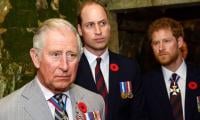Silk Road expedition reaches Arabian Sea
Team members travelling along the historical Silk Road completed their expedition in Karachi amid sweltering heat on May 25.
After exploring historical sites along the Silk Road from Xian to Kashgar in China, the team went along its southern spur to enter Pakistan over the Khunjerab Pass (4,693 meters) and then continued along the Karakorum Highway (KKH), said a press release issued on Thursday.
Silk worm rearing continues in Suzhou on the Eastern coast of China to Haripur in Khyber Pakhtunkhwa in Pakistan. Silk fabric production is evident in Shanghai, Multan and Karachi.
The team visited Taxila, near Pakistan’s capital Islamabad, which was an important staging point on the Silk Road along with Peshawar. The towering mountains, powerful glaciers and the roaring rivers in the Hunza and Gilgit areas right upto Abottabad were a special delight.
The area people are extremely friendly and hospitable. We saw no signs of any extremism at all. It is surprising that the Pakistan government issued a restriction on foreign tourists and put in a requirement to obtain permits six months prior to travel. Amid an uproar from the tour agencies of the Northern Areas, this restriction has now been withdrawn. This withdrawal was informally announced by the commissioner of Gilgit-Hunza while welcoming us in Gilgit. So glad that we witnessed the evolution of a sane decision!
The cleanliness, education, music and friendliness of the Hunza people are a model to be followed by all. Ancient Buddhist carvings on stones were seen at many places along the KKH/Silk Road in Pakistan as is frescoes, paintings and statues all along the Silk Road in China. There was clear evidence of exchange of goods, ideas, thoughts and religions along the entire route of the Silk Road.
There is great hope that One-Belt-One-Road (OBOR) or the ‘New Silk Road’ initiative of President Xi Jinping will result in revival of trade, ideas and thoughts for the economic benefits of all along the Silk Road.
In Pakistan, the CPEC roads and economic infrastructure are part of the same grand scheme and all indications are that they are being actively pursued.
Unless we goof up the implementation, there is tremendous expectation in all the people along the belt. At Islamabad, the team paused for a day while reconsidering the various options for the route to be taken. The original plan was to use the CPEC central route all the way up to Gwadar. Due to security conditions we used a mixture of the CPEC eastern and central routes and skipped Baluchistan entirely.
From Islamabad to Multan we used the CPEC eastern route, where the existing motorway is wonderful and was uneventful. We stayed across the Bahauddin Zakaria University at Buch Villas. This is a new development with luxurious homes and full facilities. Our host was Captain Bucha (now retired from PIA) and at one time he flew the Islamabad-Beijing route possibly hauling silk, jade and other trade goods between China and Europe! Multan was conquered by Alexander the Great (326 BCE). It was here that he was struck by a poisonous arrow; he barely survived and led his army down to Gwadar and to Babylon.
The noted Chinese traveller, Huen Tsang, visited Multan in 641 CE in his travels on the Silk Road. Multan is known as the “City of Saints” and we visited the mausoleum of Shah Rukn-e-Alam (1251-1335) on a hillock within the Multan Fort to offer fateha and prayers. The restoration work at the mausoleum is remarkable and accurately exhibits the grandeur of the artisan’s work in the 14th century. The blue tile work and other architecture elements reflect Persian influence. While Taxila and Peshawar were important staging points, Multan, Lahore and Debal/Banbhore/Barbarikon (near Karachi) were other staging points on the Southern spur of the Silk Road.
Next day the team travelled towards Muzaffargarh and visited a mango farm. The area is famous for quality mango cultivation. The trees were laden with various varieties of mangoes. Alas, our favorite fruit will not be ripe for another fortnight or a month!
We crossed the Indus at Dera Ghazi Khan and then joined the CPEC central route. The roads were good, but the traffic discipline and encroachment of shops needs attention, they hinder the smooth flow of traffic. Motorcycles and tricycles are galore. We saw a variety of tricycles. “Qingqi” (a Chinese origin tri-wheeler with a motorcycle front portion) has inspired dozens of derivatives for passenger and goods haulage. The best was a 4-wheel tri-wheeler. Here the entire motorcycle was attached to the rear two wheels for goods haulage!
What an adoption, it does the work very well!
This was the season of wheat crop harvesting, so we encountered bulbous loads of straw being hauled in trucks and tractor-trailer combinations. They often occupied the entire width of the highway and the traffic and cops had no issue with it, they would wiggle around these straw hauling trucks in full comfort! We stopped in Shikarpur for lunch. The city is famous for their quality sweets (mithais). After this we left the CPEC central route. The originally intended route turns South-West for Shahdadkot, Khuzdar, Panjgur and Gwadar (also known as the under-construction M-8 on the CPEC routes). Although we did not see any evidence, we learnt that the construction is in full swing and the M-8 route should be completed by mid 2018. Security concerns did not allow us to use this route. Our repeated requests for military or police escorts in Balochistan went unheeded.
We had tea at Sehwan and then headed to Karachi. The 18-hour driving stretch was arduous at best! Karachi and associated cities of Debal, Bhanbore and Barbarikon on the wildly swinging Indus delta were staging points on the Silk Road as well as the maritime silk route. This role is now being taken over by Gwadar.
We did reach the Arabian Sea, but are sad that we could not get to the intended city of Gwadar which is the terminus of the ‘New Silk Road’s Pakistan portion. Safety considerations prevailed and we sincerely hope that the right political and economic steps are taken to befriend the Balochistan populace and give them a sense of participation in the larger CPEC and Silk Road initiatives.
A lot of simplification of visa and truck movement processes need to be done if CPEC trade and tourist traffic is to be generated. The expedition members are preparing a series of articles and a documentary with the intention of encouraging Pakistanis to discover more of the country and the neighbouring regions and get involved in adventure and history to create a better respect and understanding of each other. Look out for the release of the documentary!
-
 Jennifer Lawrence Reveals ONE Rule That Keeps Cooke Maroney Marrriage Alive
Jennifer Lawrence Reveals ONE Rule That Keeps Cooke Maroney Marrriage Alive -
 Who Changed George Clooney's Mind On Marriage?
Who Changed George Clooney's Mind On Marriage? -
 Beckham Family 'feud' Damaging Piers Morgan's Mental Health
Beckham Family 'feud' Damaging Piers Morgan's Mental Health -
 Prince Harry Turns Into A Huge Risk For King Charles As The Optics Spot His Threat
Prince Harry Turns Into A Huge Risk For King Charles As The Optics Spot His Threat -
 Zoe Saldana Overtakes Scarlett Johansson To Become Highest Grossing Actor Of All Time
Zoe Saldana Overtakes Scarlett Johansson To Become Highest Grossing Actor Of All Time -
 Former Congressional Employee Sold Stolen Government Phones For $150k
Former Congressional Employee Sold Stolen Government Phones For $150k -
 Joe Keery Credits Friends For Rare Experience
Joe Keery Credits Friends For Rare Experience -
 Jackson White Teases Darker Turn For Stephen In 'Tell Me Lies' Season 3
Jackson White Teases Darker Turn For Stephen In 'Tell Me Lies' Season 3 -
 Chris Hemsworth Leans On Matt Damon Amid His Shaky Marriage To Elsa Pataky?
Chris Hemsworth Leans On Matt Damon Amid His Shaky Marriage To Elsa Pataky? -
 Friends Of Prince William 'aghast' As King Charles Offers Olive Branch To Harry, Meghan Markle
Friends Of Prince William 'aghast' As King Charles Offers Olive Branch To Harry, Meghan Markle -
 What Cancer Does Colleen Hoover Have?
What Cancer Does Colleen Hoover Have? -
 Zayn Malik Drops Special Surprise For Fans On His 33rd Birthday
Zayn Malik Drops Special Surprise For Fans On His 33rd Birthday -
 Nicola Peltz Sends Harsh Message To Beckhams With Brooklyn Comments
Nicola Peltz Sends Harsh Message To Beckhams With Brooklyn Comments -
 Apple Martin 'lashes' Out At Mom Gwyneth Paltrow For Pushing Her 'too Hard'
Apple Martin 'lashes' Out At Mom Gwyneth Paltrow For Pushing Her 'too Hard' -
 Meghan Markle Going To 'humiliate' Prince Harry With UK Trip
Meghan Markle Going To 'humiliate' Prince Harry With UK Trip -
 Pastor Jailed After Secretly Filming Woman In Store
Pastor Jailed After Secretly Filming Woman In Store



